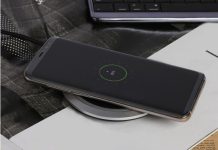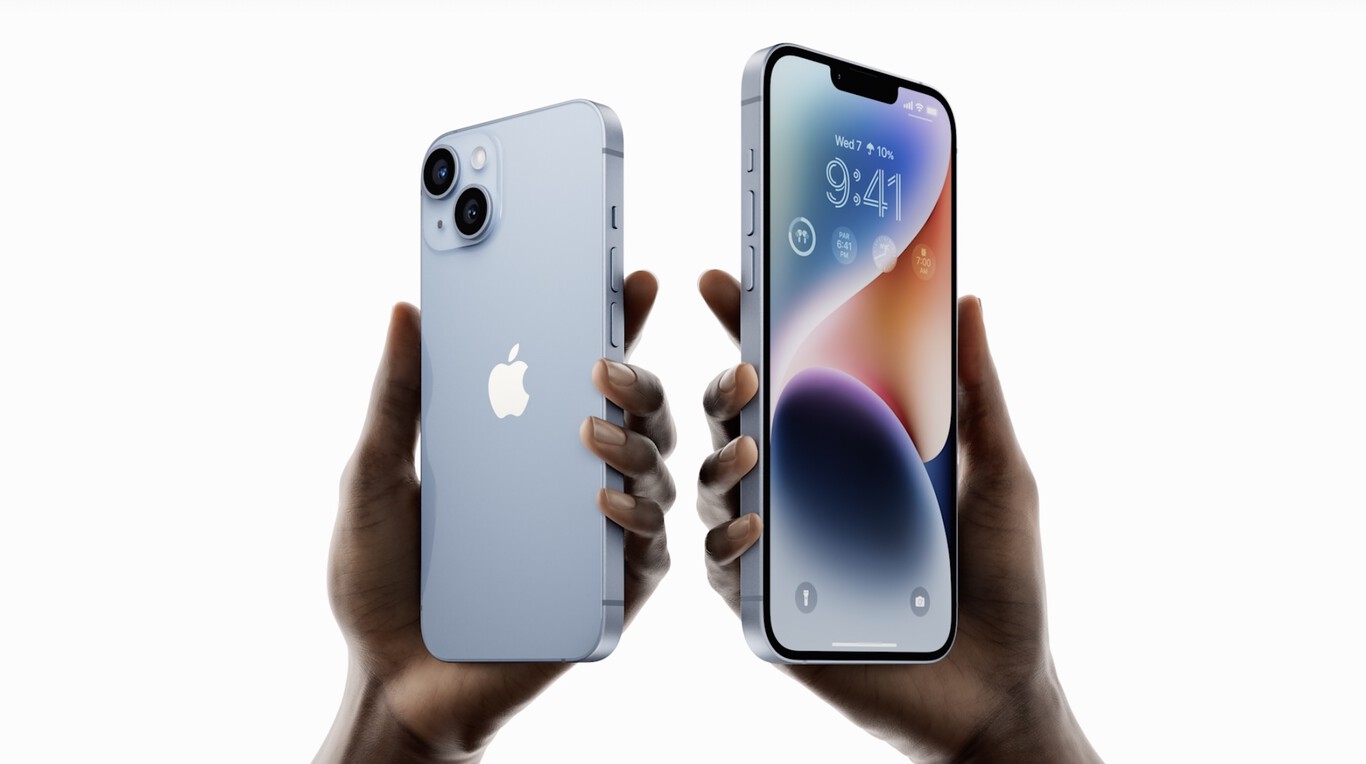
Today Apple has renewed its family of smartphones and has done so with a new member. We do not have an iPhone 14 mini, but what we will have is the new iPhone 14 Plus, which is essentially a large-format iPhone 14 that comes along with the newly introduced iPhone 14, iPhone 14 Pro, and iPhone 14 Pro Max.
That is the great (and almost only) asset of this model: if you wanted a large screen diagonal but without having to pay for the iPhone 14 Pro Max, the new iPhone 14 Plus is an interesting proposal. One that also benefits from another striking advantage: more battery.
Technical sheet of the iPhone 14 Plus
|
IPHONE 14PLUS |
|
|---|---|
|
SCREEN |
Super Retina XDR Display 2,778 x 1,284 px (458 dpi) True Tone, HDR, 1,200 nits |
|
PROCESSOR |
Apple A15 Bionic, 5nm |
|
STORAGE |
128 /256 / 512 GB |
|
DIMENSIONS AND WEIGHT |
160.8 x 78.1 x 7.8mm 203g |
|
SOFTWARE |
iOS 16 |
|
REAR CAMERAS |
Main: 12 MP (26mm), f/1.5, OIS Ultra Wide Angle: 12 MP (13 mm), f/2.4, 120º FOV 2x optical zoom, 5x digital zoom |
|
FRONTAL CAMERA |
TrueDepth 12MP f/1.9 |
|
BATTERY |
Up to 20 hours of video playback (16 if via streaming) 20W fast charging Wireless charging (up to 15W with MagSafe, 7.5W with Qi) |
|
CONNECTIVITY |
5G Wifi GPS Apple Pay satellite emergency calls |
|
OTHERS |
IP68 resistance FaceID eSIM (no SIM slot on models sold in the US) lightning connector impact detection |
|
PRICE |
128 GB: 1,159 euros 256 GB: 1,289 euros 512 GB: 1,549 euros |
Bigger is better (for a lot of people)
This launch seems to confirm the data that was had on the sales of the iPhone 13 mini. That model, the most compact in the family from last year, drew attention due to its small dimensions: only 5.4 inches in which we could still find fantastic features.
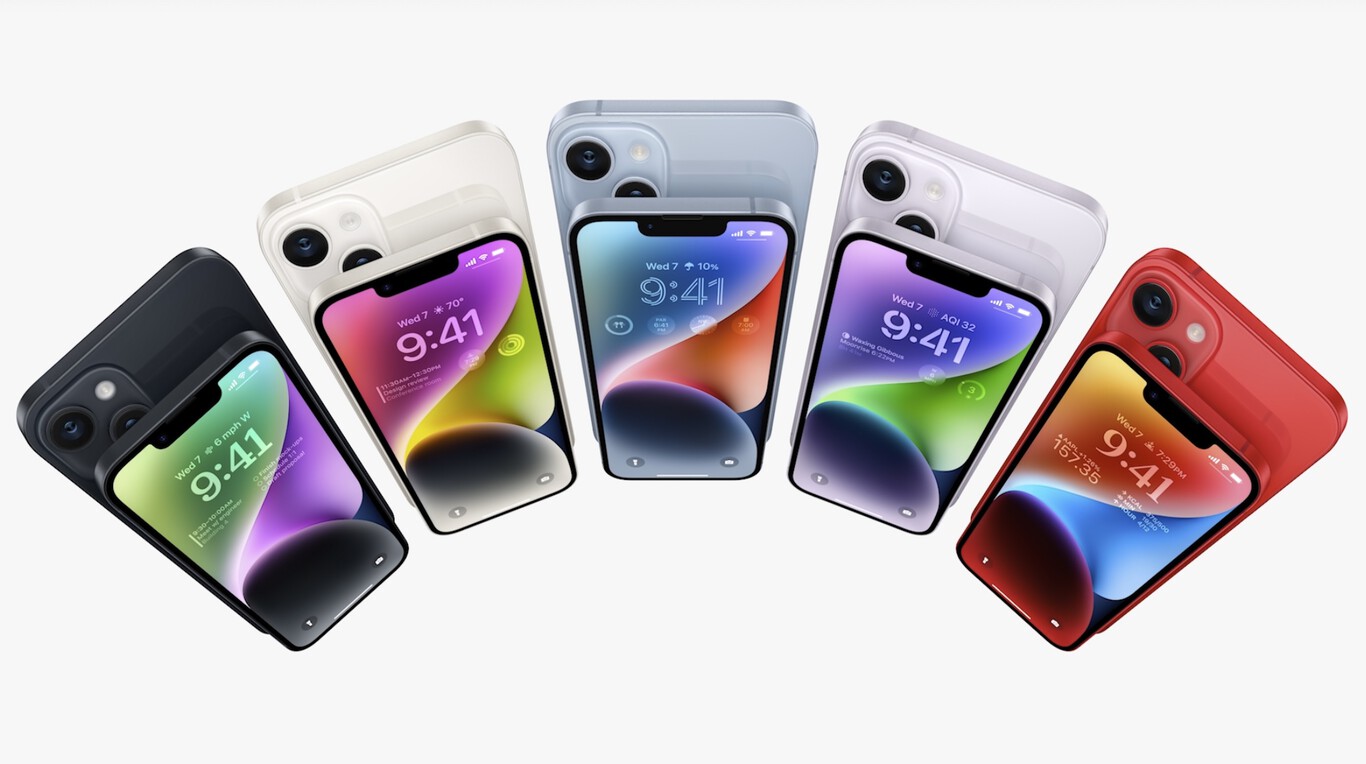
However, the numbers must not have come to Apple, and although people liked the iPhone 13 mini, they did not buy it. It undersold the iPhone 12 mini, which seems to have made it clear what people want: bigger screens.
That is what the iPhone 14 Plus proposes, which maintains the same design lines as the iPhone 14 but simply does so with a 6.7-inch screen diagonal instead of the 6.1 of that “standard” model.
In the rest of the elements, the design is identical to the aforementioned iPhone 14: the notch or sample is maintained on the front, and on the back, we have the same camera module with two sensors located diagonally and the flash. The design of the iPhone 14 Plus will be available in five different colors: black, white, purple, blue, and red.
Stretching the screen (and the battery)
The fundamental difference in this model is, as we said, its screen diagonal, which goes from 6.1 inches on the iPhone 14 to 6.7 inches on the new iPhone 14 Plus .
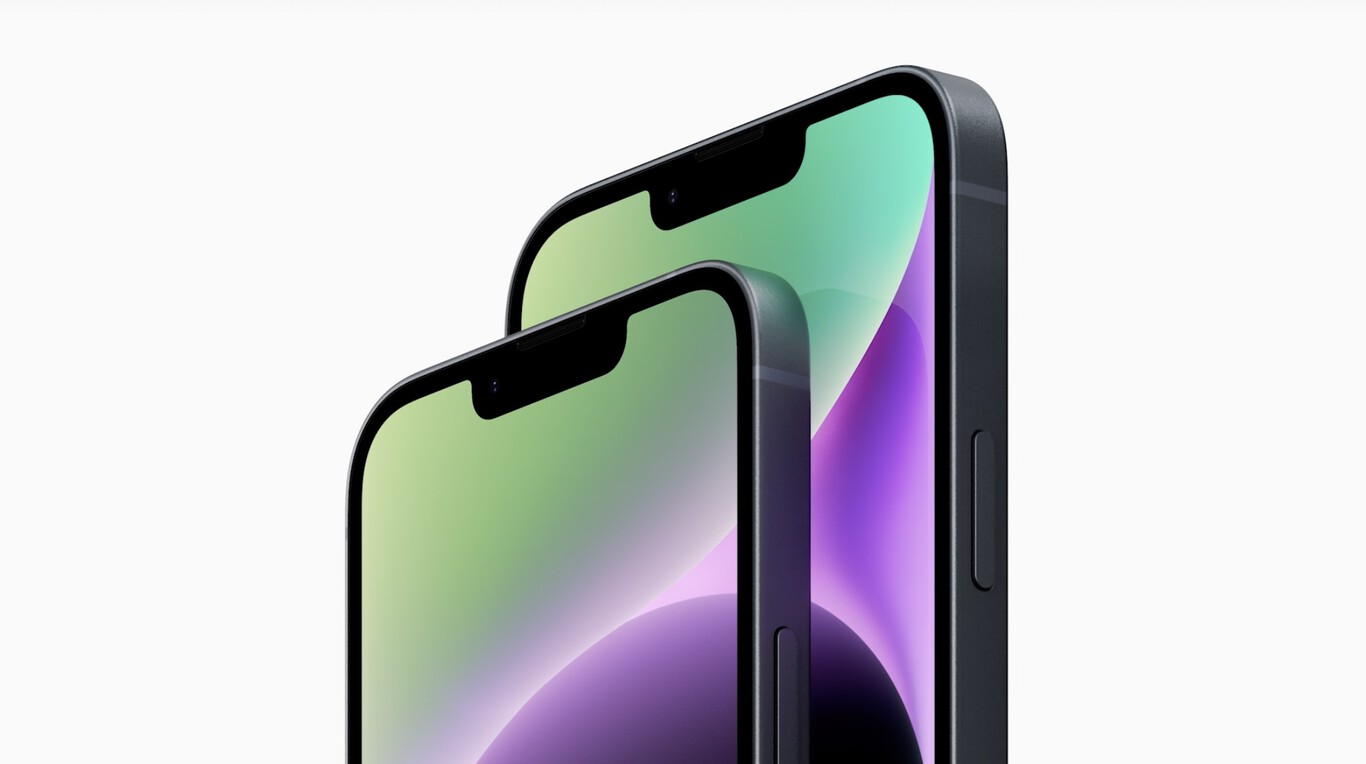
This is a Super Retina XDR screen with OLED technology that is capable of offering up to 1,200 nits of brightness and contrast of up to 2,000,000:1. HDR support (Dolby Vision, HLG, and HDR10) joins the already traditional support of True Tone technology and a wide color gamut.
As with the iPhone 14, the specifications of this iPhone 13 Plus are not particularly different from those of last year’s models. Here Apple has also wanted to make a difference concerning the Pro models, and for the first time in years penalizes the standard models with a controversial decision: it maintains the same SoC, the Apple A15 Bionic.
We are therefore facing a terminal that does not gain in performance compared to its predecessors, something striking and that certainly marks a before and after in the renewal of Apple’s iPhone families.
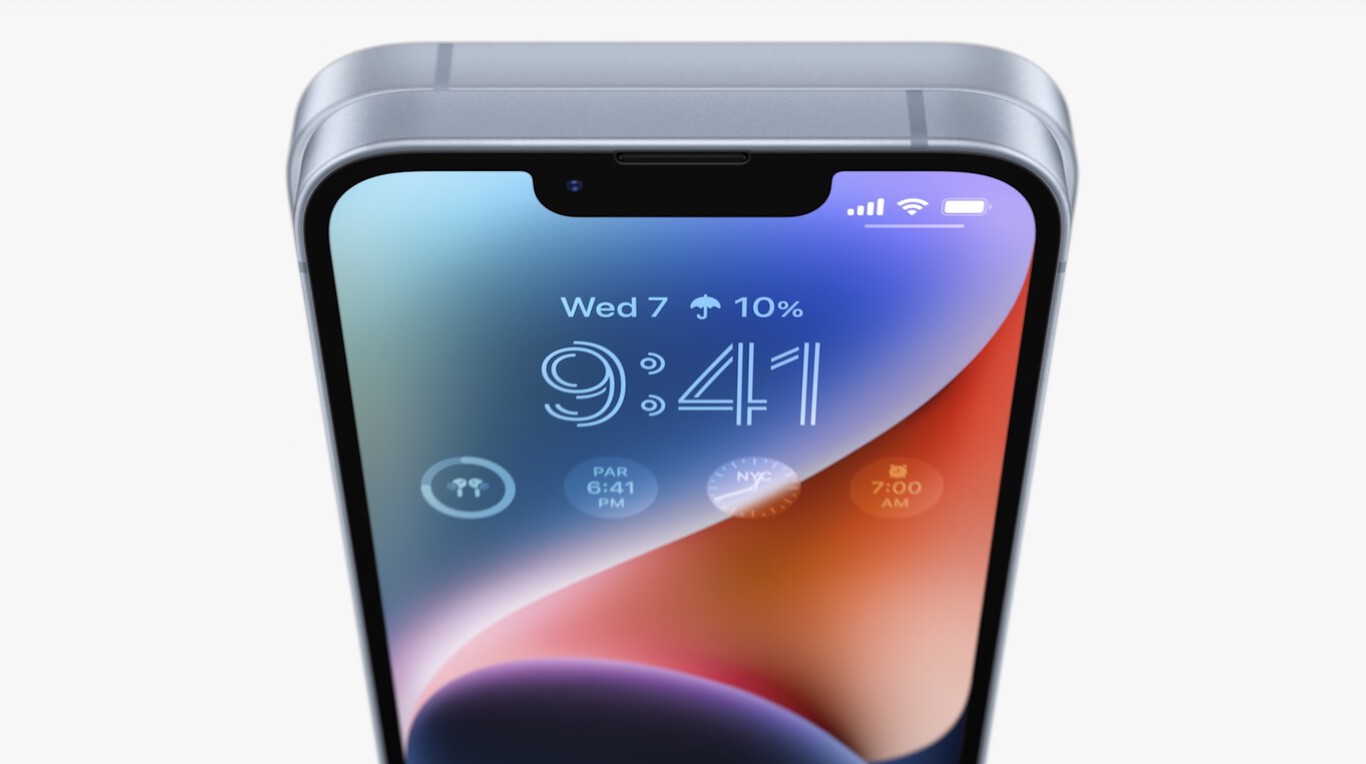
This SoC is indeed remarkable, but here it is clear that many may appreciate the real advantages compared to last year’s models: with the same processor, perhaps the screen diagonal (and battery) are convincing enough for potential buyers.
As happened with the iPhone 13 last year, the storage capacity can be 128, 256, or 512 GB. Apple has not given data on the memory configuration, but all the rumors pointed to it having 6 GB of RAM, thus increasing the 4 GB of the iPhone 13/mini from last year.
This larger screen also allows you to achieve an interesting additional advantage: an even greater autonomy that Apple classifies as the largest of an iPhone ever achieved. No range figures were mentioned in the presentation, but we will update this information when we have those data. As expected, these terminals are based on the new iOS 16.
Cameras get better
Apparently, the camera module does not change, but the sensors do, which according to Apple significantly improve behavior in all types of light, but especially in low light conditions .
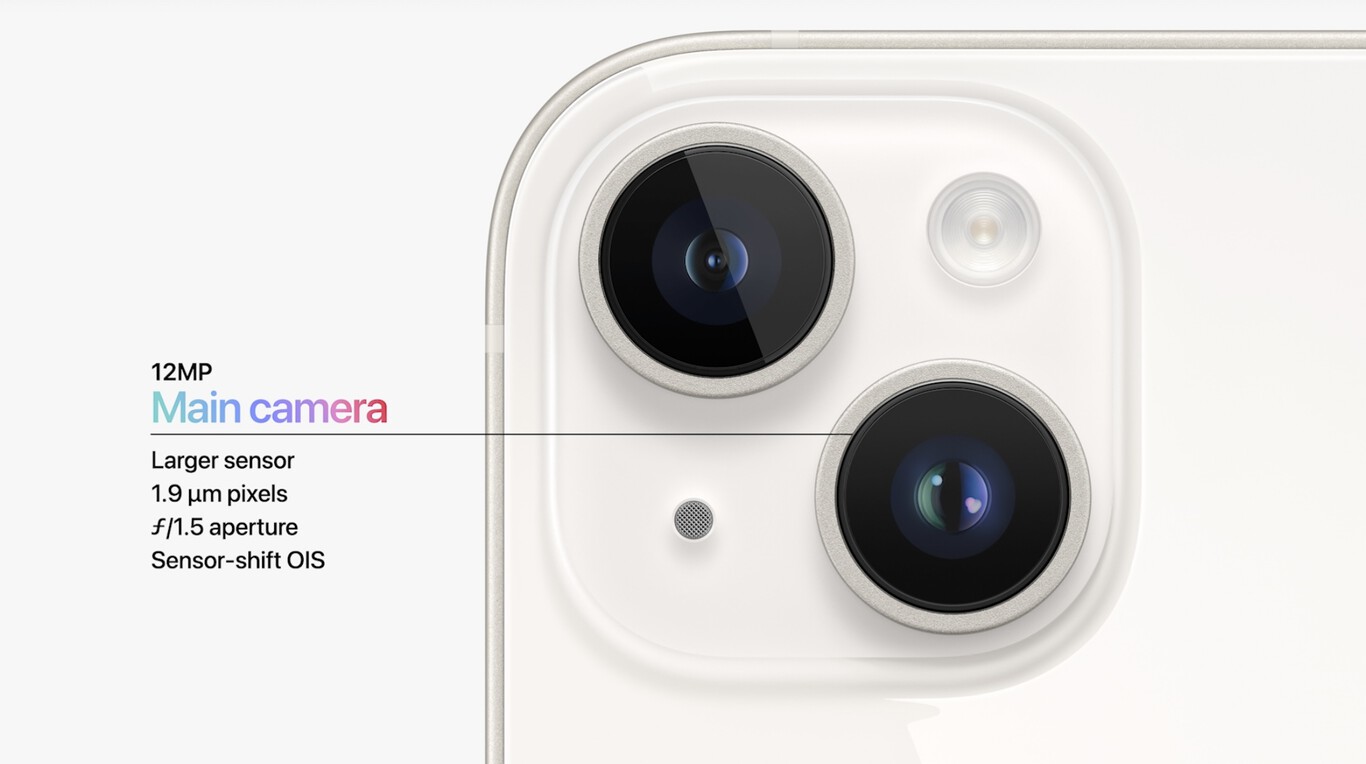
The new main sensor has 12 MPixels, but the pixels are larger (1.9 microns) and have an f/1.5 aperture.
Not only that: it also has optical image stabilization, something important for the arrival of a feature that we will talk about later. The Ultra Wide Angle is also apparently the same 12 Mpixel sensor that we already saw in the iPhone 13.
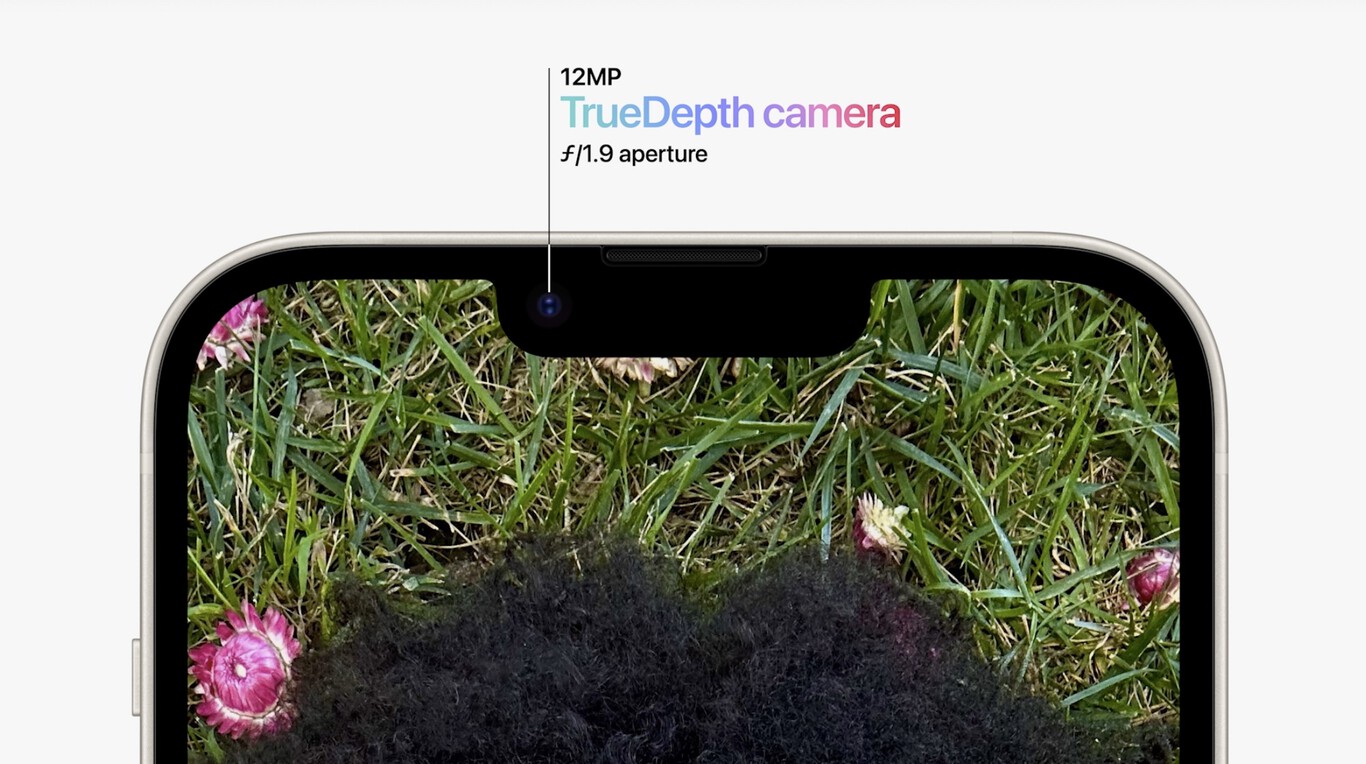
The TrueDepth front camera now has an f/1.9 aperture (it was f/2.4 on the iPhone 13), but above all, it has autofocus for the first time, a welcome novelty for selfies that will now be better focused in any type of light.
These hardware improvements are joined by software improvements. Apple claims to have made a notable leap in the quality of photos thanks to the so-called Photonic Engine that combines even more photos for the final shot.

This computational photography engine allows you to double the quality of low light photos in the front and ultra-wide angle, but go even more in the main one, where performance is improved by 2.5.
The new optical stabilizer of the main sensor allows access to the new ‘Action Mode’, a video recording mode specifically oriented to action scenes with a lot of movement which also improves the overscan of the video shot.
Goodbye to the SIM slot (in the US)
The iPhone maintains 5G connectivity and eSIM support that avoids the need for physical SIM cards. Apple highlighted the relevance of the eSIM and the advantages it provides, for example, when changing mobile contracts.
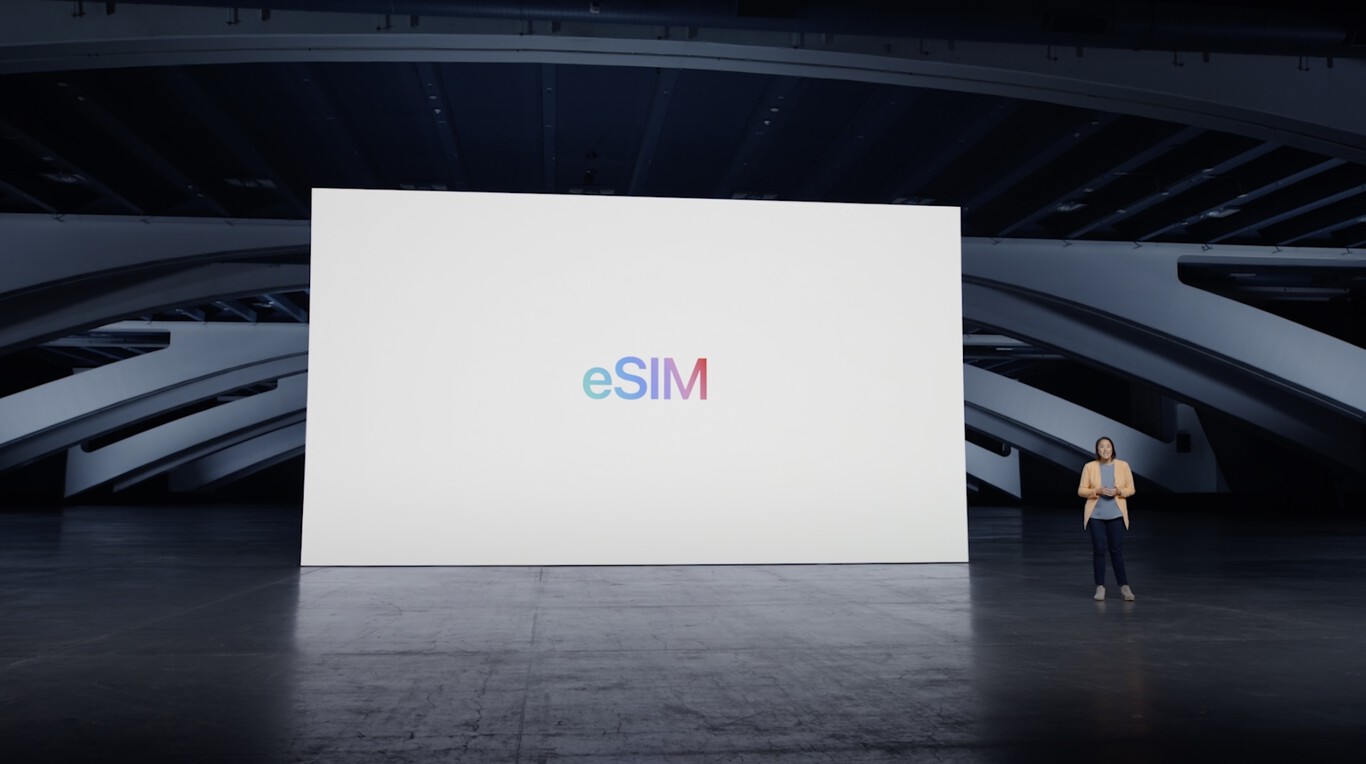
The relevance of this technology is important because, as has been rumored, all iPhone 14 models sold in the United States lack a physical SIM slot and will be entirely based on eSIM.
The shock detection that has been part of the new Apple Watch Series 8 also reaches the iPhone 14 Plus, which also has another new feature: the possibility of making emergency calls via satellite .
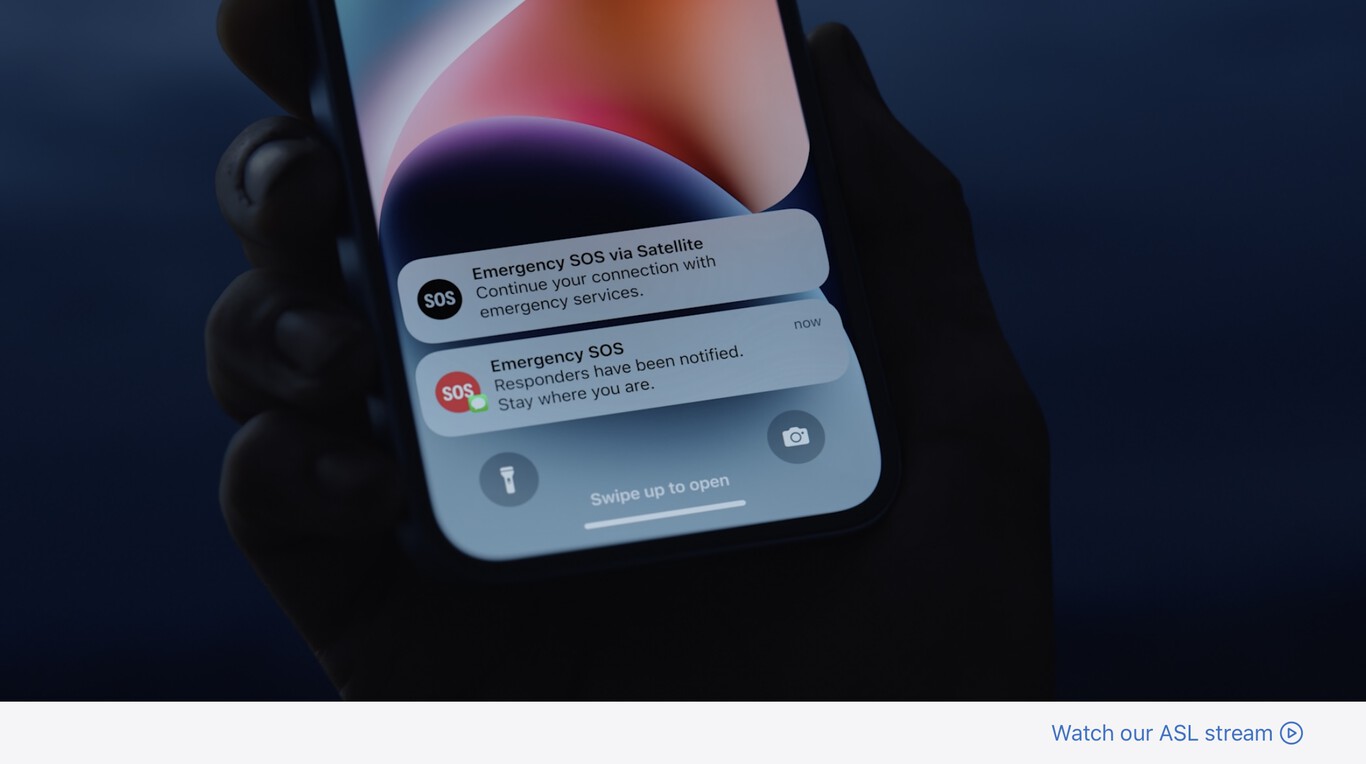
This function allows those who have lost coverage to make emergency calls and also helps to orient the mobile and “point correctly to the satellite” so that the call can be made.
The satellite emergency call service will be launched in November and will be available for free for the first two years on the iPhone 14. Of course: it will only be available in the US and Canada.
Versions and prices of the new iPhone 14 Plus
The new iPhone 14 Plus will be available to reserve in Spain on September 9 and will be in the hands of buyers and stores on October 7. The prices will be the following:
- iPhone 14 Plus (128 GB): 1,159 euros.
- iPhone 14 Plus (256 GB): 1,289 euros.
- iPhone 14 Plus (512 GB): 1,549 euros.

Sharlene Meriel is an avid gamer with a knack for technology. He has been writing about the latest technologies for the past 5 years. His contribution in technology journalism has been noteworthy. He is also a day trader with interest in the Forex market.




